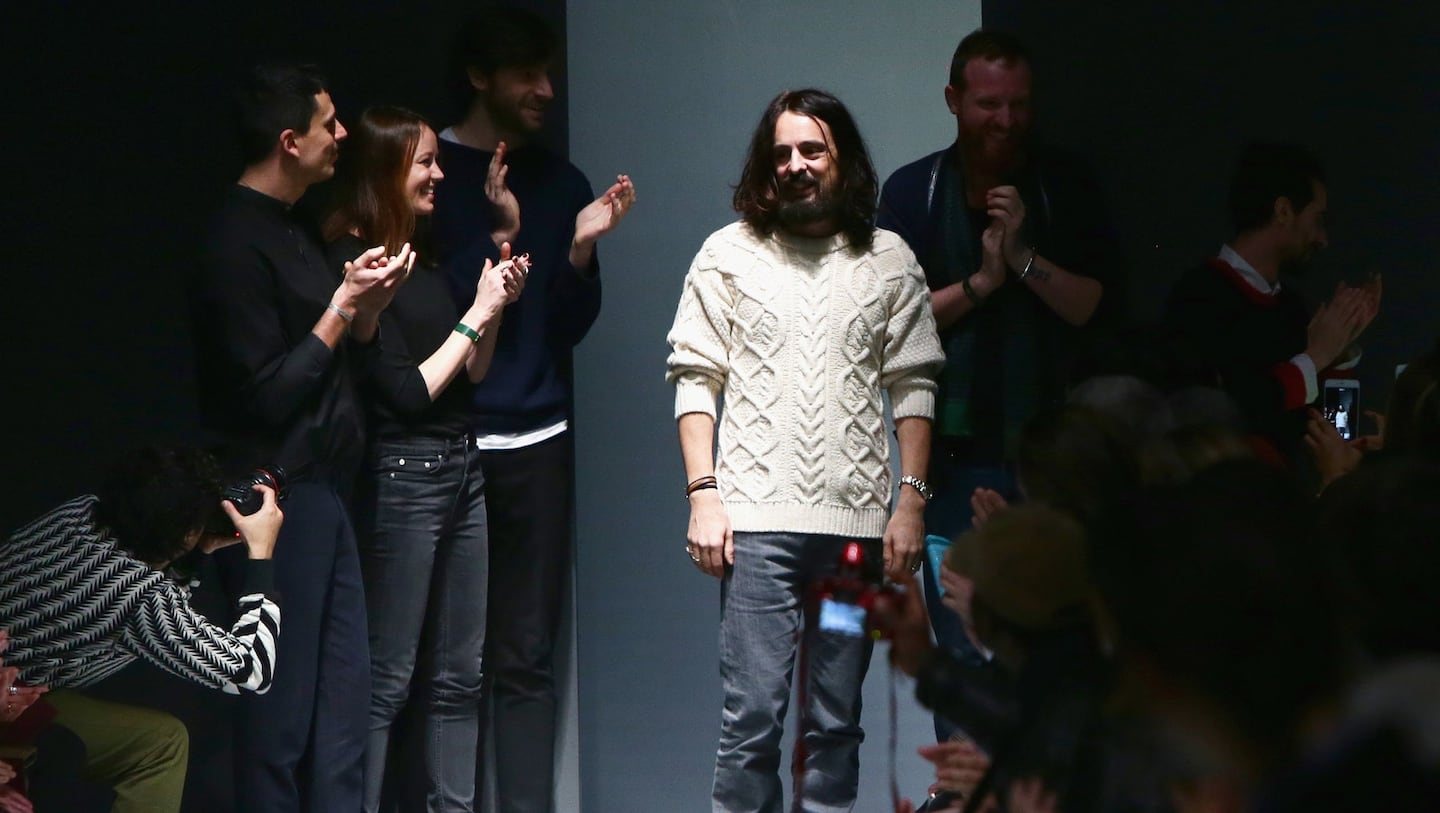
The Business of Fashion
Agenda-setting intelligence, analysis and advice for the global fashion community.

Agenda-setting intelligence, analysis and advice for the global fashion community.

MILAN, Italy — Gucci's gamble to put Alessandro Michele, a little-known accessories designer, in charge of its creative turnaround has won praise from the catwalk. Investors are still waiting to see the benefit.
Michele’s focus on vintage styling and the brand’s double-G logo has been well received by fashion magazines, but sales at the $3.8 billion brand haven’t budged. Gucci accounts for nearly two thirds of parent Kering SA’s profit, and has barely grown over the past three years.
“Investors are interested in when this new creative momentum will translate into tangible financial results,” said Mario Ortelli, an analyst at Sanford C. Bernstein. “The turnaround of Gucci continues to be central to Kering’s investment case.”
Paris-based Kering needs the revamp to work, yet the timing couldn’t be more challenging. The fallout from the November terror attacks in Paris compounded an already difficult year for Gucci and its luxury peers as demand slowed in almost every region, led by a slump in Asia. The $272 billion market is the most uncertain since 2008, according to Deutsche Bank, which last month cut its fourth-quarter and 2016 growth estimates.
ADVERTISEMENT
Evidence of how Michele’s debut collection, which entered some stores in September, went down with shoppers will become visible Feb. 18, when Kering reports earnings. Later this month, the 43-year-old Michele will unveil his latest menswear styles.
Kering promoted Michele to Gucci creative director in January last year, tasking him with restoring growth to the 95-year-old label. From his first collection featuring pleated red leather skirts and sheer pussy-bow blouses to his 1970’s-inspired vision for spring-summer 2016, Michele brought a buzz back to the brand. He won best international designer at the British Fashion Awards in November.
There are signs his efforts are rekindling demand, with Kering citing double-digit growth of handbags such as the $2,500 Dionysus and $1,390 Linea A shoulder bags. Ortelli, the Bernstein analyst, expects Michele to accelerate sales by the middle of 2016.
"We're seeing a lot of new clients, a lot of new customers — different, younger, more fashion forward — buying the collection, but not losing the previous ones," Gucci Chief Executive Officer Marco Bizzarri told The Business of Fashion website in November.
‘No Proof’
As encouraging as Bizzarri’s comments are, “there is still no proof that Gucci’s turnaround will be successful,” said Hermine de Bentzmann, an analyst at Raymond James. She expects Gucci sales to have risen 1.1 percent in the past quarter and to grow 3 percent this year, excluding currency swings.
It will probably take until the second half of the year to see if Michele has delivered on expectations, according to Antoine Belge, an analyst at HSBC in Paris. Brands such as Louis Vuitton and Kering-owned Saint Laurent took about 18 months to boost sales after similar revamps.
The full complement of Michele's designs won't be in Gucci's boutiques until the third quarter, predicts MainFirst Bank AG analyst John Guy. Revamping the brand's network of more than 500 stores — the second largest among leather-goods makers after Salvatore Ferragamo SpA — will take as many as four years, Bizzarri has said.
ADVERTISEMENT
Still, “if the numbers are good in the coming quarters, some people will call it a turnaround,” said Belge.
By Andrew Roberts; editors: Matthew Boyle, Thomas Mulier.
In 2020, like many companies, the $50 billion yoga apparel brand created a new department to improve internal diversity and inclusion, and to create a more equitable playing field for minorities. In interviews with BoF, 14 current and former employees said things only got worse.
For fashion’s private market investors, deal-making may provide less-than-ideal returns and raise questions about the long-term value creation opportunities across parts of the fashion industry, reports The State of Fashion 2024.
A blockbuster public listing should clear the way for other brands to try their luck. That, plus LVMH results and what else to watch for in the coming week.
L Catterton, the private-equity firm with close ties to LVMH and Bernard Arnault that’s preparing to take Birkenstock public, has become an investment giant in the consumer-goods space, with stakes in companies selling everything from fashion to pet food to tacos.